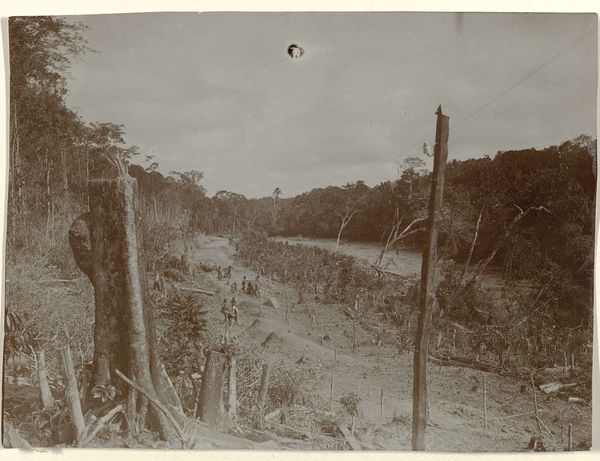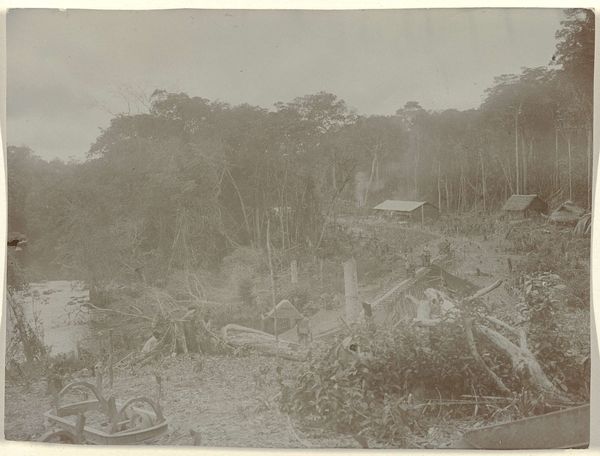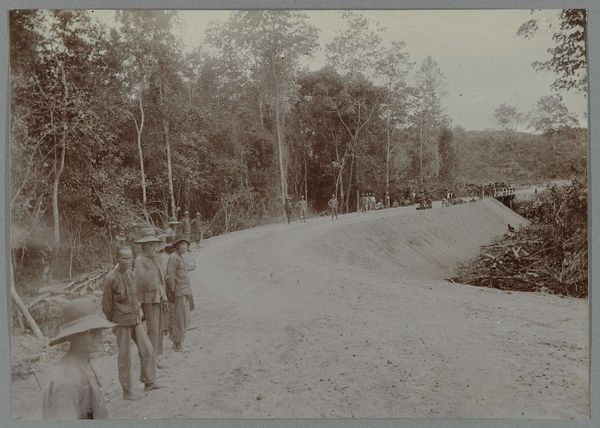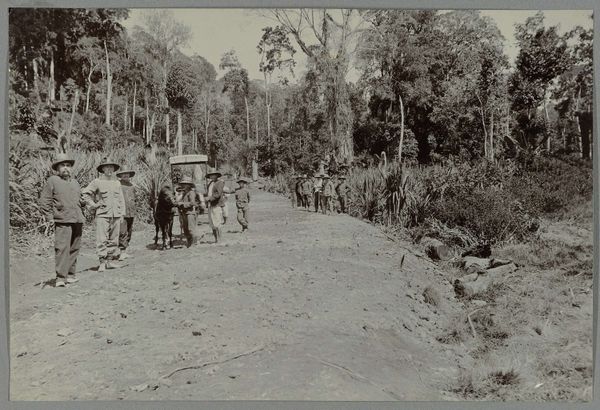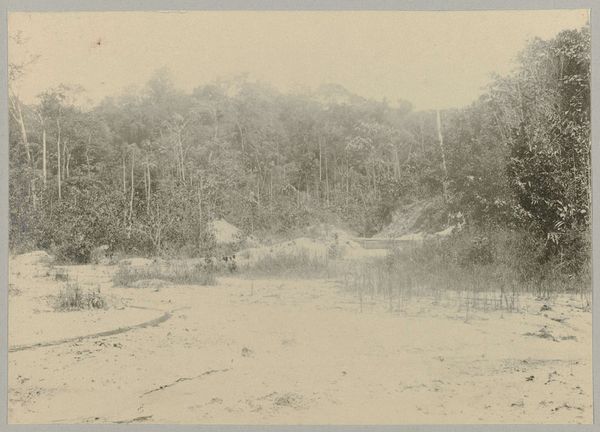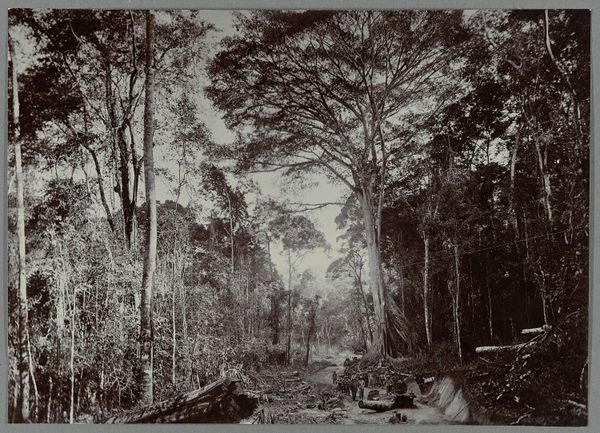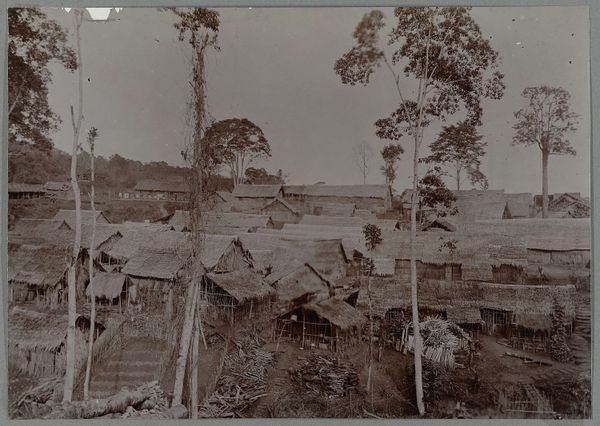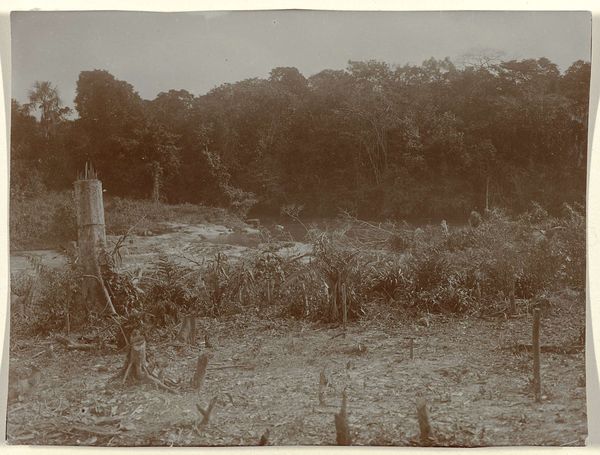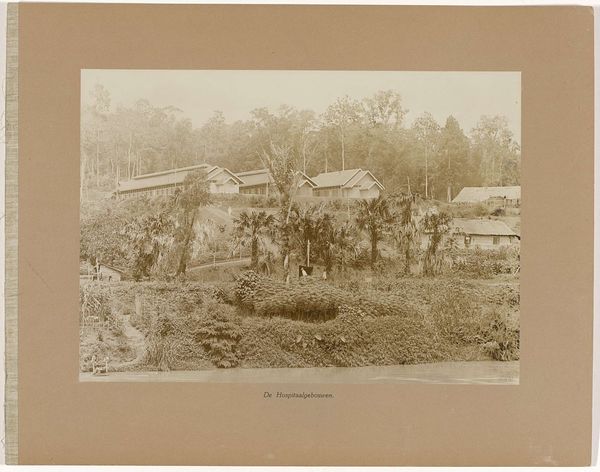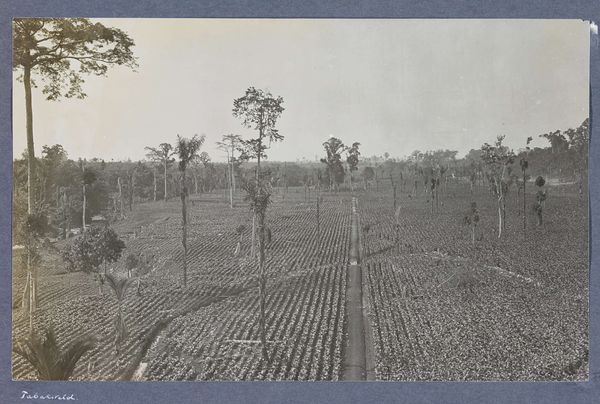
photography, albumen-print
#
african-art
#
pictorialism
#
landscape
#
photography
#
photojournalism
#
cityscape
#
albumen-print
#
realism
Dimensions: height 85 mm, width 114 mm
Copyright: Rijks Museum: Open Domain
Editor: This is "Aanleg spoorweg in Suriname," taken sometime between 1905 and 1910, by Jacob Evert Wesenhagen, an albumen print held at the Rijksmuseum. It depicts a landscape with workers clearing land. It has a somber feel to it, perhaps from the sepia tone and the seemingly endless task ahead of them. What story does this photograph tell, in your eyes? Curator: For me, the albumen print immediately directs our attention to the materiality of photography in the early 20th century. This isn't just a captured image; it’s a product of specific chemical processes and labor. Note how the clearing of the land mirrors the exploitation inherent in the photographic process itself, extracting an image from its subject. The 'photojournalism' aspect raises questions about the photographer's role. Were they commissioned? Whose interests were they serving? Editor: That's a perspective I hadn't considered. The connection between the labor in the photo and the making of the print. How does Wesenhagen's choice of "pictorialism" relate to the labor in the photograph? Curator: Exactly. Pictorialism, with its emphasis on aesthetic beauty, often obscures the underlying social and economic realities. In this case, it romanticizes the violent imposition of infrastructure onto the Surinamese landscape, hiding the extraction of resources and the exertion of labor under the guise of progress. Editor: So, the beauty distracts from the exploitation? It is interesting to consider the intended audience when interpreting this image. It speaks to the complicated nature of “landscape” as a genre. Curator: Precisely! It invites us to critically examine not just what is depicted, but how and why. We have to ask, how are raw materials – labor, land, chemicals – being transformed into an object of consumption? Editor: Thinking about it that way definitely changes my view of the piece. I initially saw a straightforward depiction of construction, but now I recognize a commentary on labor and resource exploitation, veiled by the artistic choices. Curator: I find myself wondering how it was received in the Netherlands and Suriname. That, perhaps, will have to wait for more research.
Comments
No comments
Be the first to comment and join the conversation on the ultimate creative platform.
